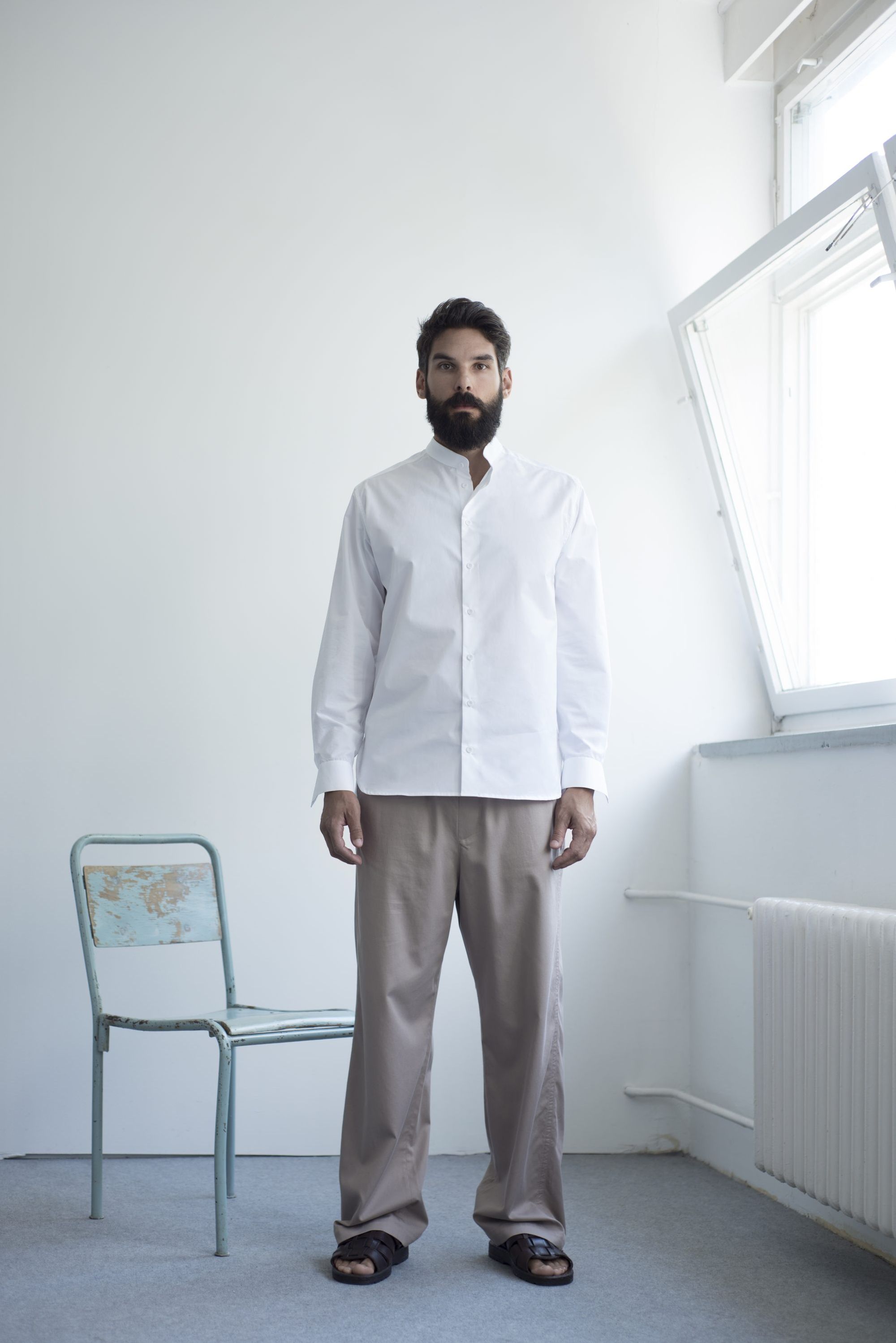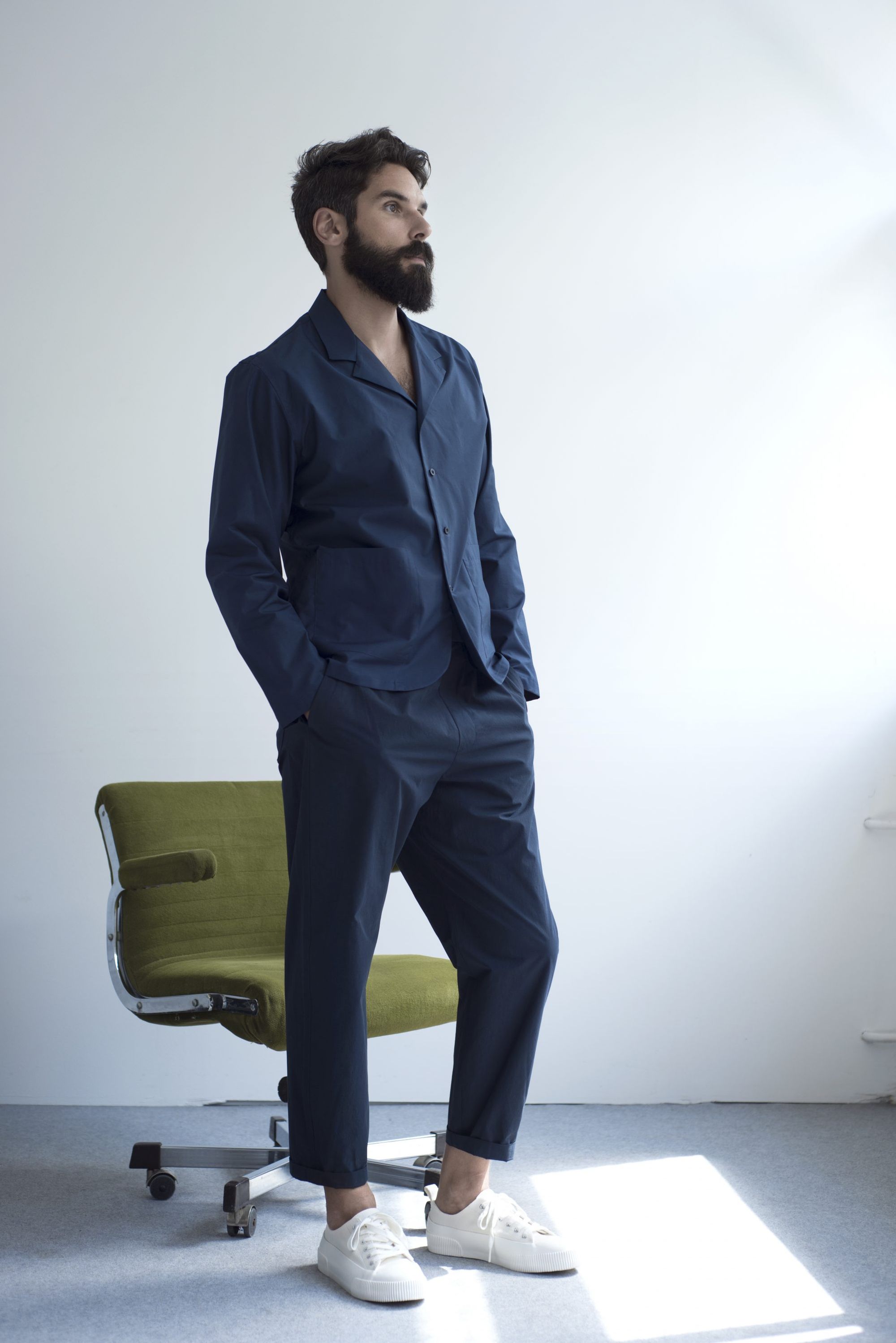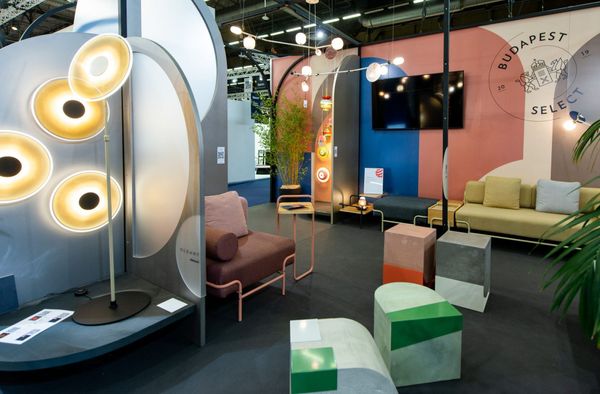With her upcoming brand, Szofi Boncsér wants to prove that we don’t have to get lost in a sea of shirts; we just need to find a few universal basics that we can wear anytime. That’s exactly what Soff offers (not just for men). But how did the designer turn her attention to shirts? That’s one of the things she told us about!
You graduated from MOME in 2014 with a degree in Fashion and Textile Design. Your diploma project at the time was a women’s collection focusing on the subjective perception of reality and unreality. Yet how did you turn to menswear?
I’ve worked with men’s wear before, the theme of my BA diploma work was men’s skirts, so I’d rather say I turned back. Men’s relationship with clothes and dressing has always captured my imagination. In creating the Soff brand, the goal was to find a fundamental piece that could be worn by a wide range of people, and that’s how I got to men’s shirts. The story behind this garment is fascinating; it just keeps inspiring me.


After graduating, you gained experience with the Belgian-born American designer Diane von Fürstenberg in Paris but also worked in Ann-Sofie Back’s studio in Stockholm. What did you learn in these places?
Many things. In Paris, during Erasmus, I had the opportunity to work at the DVF studio during fashion week, where I first encountered the “buyer” profession and how to present a brand in a professional way. I spent more time at BACK. It was a small team, and that allowed me to see the work of other departments. We, trainees, did many things, from making patterns and first samples to social media advertising. My main job was to do technical drawings, that’s what I really mastered there, and I was pretty good at it. I really enjoyed it, but it also made me realize that this is not how I see my future: I realized I didn’t want to work for another brand.
In the newly debuted Soff collection, you design universal garments with clean lines—mainly upper wear—for men. What were your inspiration and guiding principles behind the design of these high-quality, sustainable shirts?
My inspiration is the garment itself. I really enjoy exploring shirts from different periods and the characters who were and are wearing them. The shirt is still a very popular garment today, yet I see that many people can no longer wear it—they can’t find the right fit for them in thousands of different styles, which is perfectly understandable.

Soff’s core mission is to create a design studio that produces high-quality basics that are always available. That way, you have access to the same tried and tested pieces years later, without having to change the collection twice a year. This was also a key consideration in the choice of materials. We’ve been testing them for a while—wearing, washing, ironing—most brands don’t have time for that. We’ve moved the brand a bit away from classic seasonal production. We’ve taken the time to design and manufacture, and so far, the testers are happy, but we’re constantly improving the process. That’s what sustainability means to me—timeless design and the use of high-quality materials.
Some say that it is much more challenging to design clothes for men than for women. Is there any truth to this? What do you think?
I think men are also getting more open, but in this issue, I stand perhaps on the other side—finding our way back to the classics and looking for and designing pieces that our grandchildren will want to wear in the future.


You have worked and are still working on various film productions in addition to developing your own collection. What exactly is your job and what kind of productions are these? We all know that working in film is exhausting: how did you find time for the Soff project, with the constant standby mode, shooting at dawn or at night?
Yes, it’s not just an urban legend, it’s really quite exhausting, but I love doing it. Most of the time I work as an assistant costume designer, so there’s less design work and more coordination of our department and costumes. As a costume designer, I’ve worked mainly on short films, clips and commercials so far—where my main job is to create the characters. I enjoy doing every little detail. I hope I’ll never be in the position of having to choose between the two professions. At the moment, I work with fantastic people who are flexible enough to allow me to make time for the brand.
I’ve been working on Soff for several years now (hence the project name), but for a long time I didn’t know where all the plans would end up. Over the years, it became clear what I really wanted. I didn’t want to start without a foundation. Then last year I decided it was now or never. So I’m really excited to finally debut the brand after all these years.
Photos: Eszter Galambos

Hungarian designers are invited to apply for the 2022 Maison&Objet trade fair











